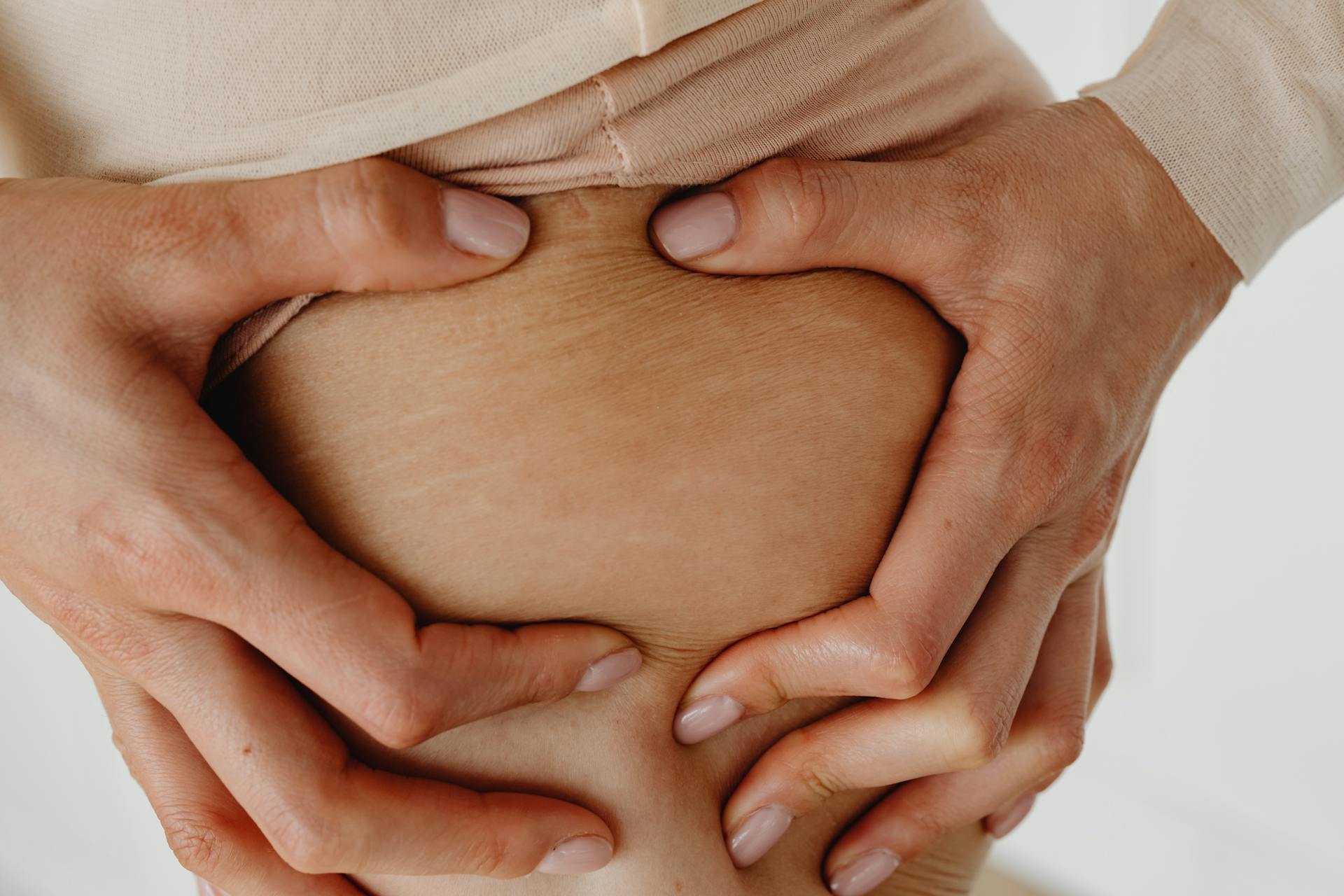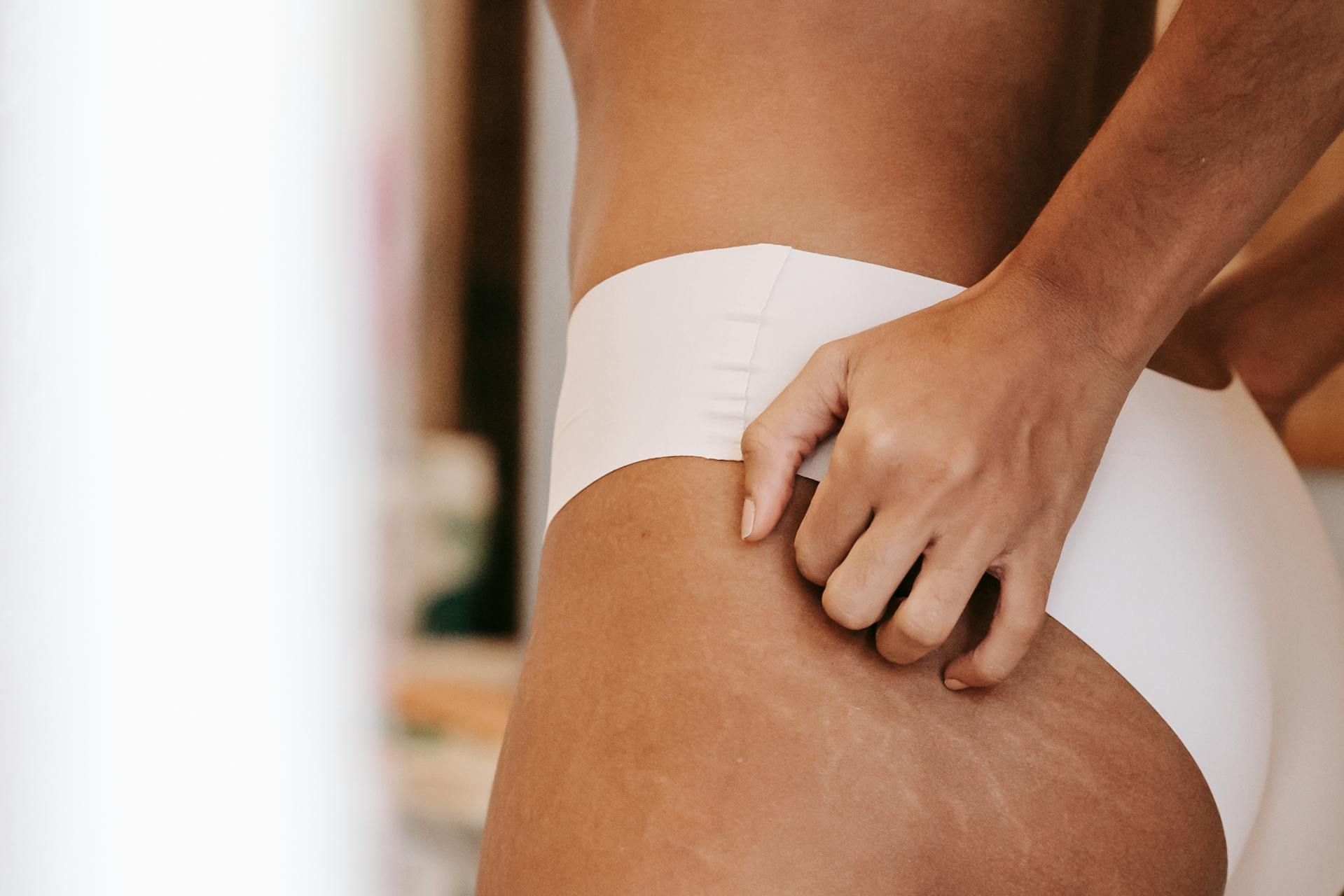Stretch marks, also known as striae, affect many individuals regardless of age, gender, or body type. These discolored, scar-like lines often appear as a result of rapid skin stretching due to weight gain, pregnancy, or growth spurts. While they technically pose no health risks, these marks can impact one’s self-esteem and body image.
Fortunately, advances in dermatological treatments have introduced the process of microneedling stretch marks as a promising solution for reducing their appearance. So, read on as we explore microneedling, how it works, and its effectiveness in treating these marks across different body areas.
What Is Microneedling?
Microneedling, also often referred to as percutaneous collagen induction therapy, is a minimally invasive cosmetic procedure that involves using an electrically powered, handheld device, either drum- or pen-shaped, fitted with fine needles. The needles create precise, microscopic punctures in the skin, known as micro-injuries. These controlled micro-injuries do not leave scars; instead, they stimulate the body’s natural healing processes through a mechanism called dermal remodeling.
Does Microneedling Help Stretch Marks?
The efficacy of microneedling for stretch marks lies in its ability to help with collagen production and skin regeneration. Stretch marks occur when the skin is stretched beyond its capacity, causing the collagen and elastin fibers to tear. By creating controlled micro-injuries, microneedling triggers the skin’s natural repair mechanisms and promotes collagen and elastin production, thus resulting in overall improved skin texture and firmness.
Achieving the desired results with microneedling often requires multiple sessions. The number of sessions needed varies depending on the severity of the stretch marks and how an individual’s skin responds to the treatment. Generally, several sessions spaced a few weeks apart are recommended to stimulate sufficient collagen production and to see significant improvement in the appearance of stretch marks.
Microneedling Stretch Marks: How Does It Work?

To understand how microneedling helps with stretch marks, it is important to break down the process into three phases: inflammation, proliferation, and remodeling.
Inflammation
The initial phase of microneedling involves the creation of micro-injuries in the targeted area. These tiny punctures cause controlled damage to the skin, triggering an inflammatory response. This response is crucial as it sets the stage for the subsequent healing process. During this phase, the body increases blood flow to the affected area, bringing essential nutrients and immune cells to begin repairing the damaged tissue.
Proliferation
In this phase, new tissue forms to replace the damaged skin. Fibroblasts, which are cells responsible for collagen production, become active and start producing new collagen and elastin fibers. This new tissue helps to fill in the stretch marks, making them less visible and improving the skin’s overall texture. Additionally, angiogenesis, the formation of new blood vessels, further enhances the skin’s appearance and health.
Remodeling
The final phase of the microneedling process is remodeling. During this stage, the newly formed collagen and elastin fibers reorganize and strengthen, leading to more resilient and smoother skin. This phase can take several months but is crucial for achieving long-lasting results. As the skin continues to remodel, the appearance of stretch marks diminishes, and the treated area becomes more uniform in texture and tone.
Microneedling for Stretch Marks: A Guide for Different Body Areas
Stretch marks appear on various body parts, and microneedling can be tailored to address each specific area effectively. Here is a guide to using microneedling for stretch marks on different body areas:
Abdomen
The abdomen is one of the most common areas for stretch marks, particularly after pregnancy or significant weight fluctuations.
When treating this area, using a needle length that matches the skin’s thickness is crucial. Typically, a needle length ranging from 1.5 to 2.5 mm is effective for penetrating the deeper layers of skin in the abdomen, promoting collagen induction, and improving the overall texture and firmness.
Thighs

Stretch marks on the thighs often result from rapid growth during adolescence or weight gain. Microneedling can effectively target these marks by promoting smoother and firmer skin through collagen stimulation.
The recommended needle length for treating thigh stretch marks is usually between 1.0 and 2.0 mm. This range allows for adequate penetration to address the stretch marks without causing unnecessary trauma to the surrounding skin.
Buttocks
The buttocks are another area prone to stretch marks due to weight fluctuations or muscle growth from exercise.
A needle length of 1.5 to 2.5 mm is typically recommended for effective treatment. This depth ensures that the microneedling process reaches the necessary layers of skin to stimulate collagen production and improve skin elasticity.
Breasts
Stretch marks on the breasts can occur due to pregnancy, breastfeeding, or weight changes.
The skin on the breasts is more delicate, so it is crucial to use a gentler approach. A needle length of 1.0 to 1.5 mm is generally recommended for microneedling stretch marks on the breasts to ensure effective treatment without causing undue trauma to the sensitive skin.
Arms
Stretch marks on the arms, especially the upper arms, can result from weight gain or muscle development.
A needle length of 1.0 to 2.0 mm is suitable for treating stretch marks on this area. This depth allows for effective collagen induction without causing significant discomfort or damage to the skin.
Hips
The hips are a common area for stretch marks, particularly in women. Microneedling can effectively target these marks, resulting in smoother, more even-toned skin.
The recommended needle length for treating stretch marks on the hips is typically between 1.5 and 2.5 mm. This range ensures adequate penetration to stimulate collagen production while accommodating the thickness of the skin in this area.
General Considerations
When considering microneedling for stretch marks, several factors should be taken into account to ensure optimal results and a safe treatment experience. First, it is essential to weigh the differences between professional and at-home treatments.
While at-home microneedling devices are available and can offer some benefits, professional treatments performed by a dermatologist or licensed practitioner are generally more effective and safer. Professional-grade devices are capable of penetrating deeper into the skin, which can lead to more significant and longer-lasting results.
Another consideration is the potential for pain and discomfort during the microneedling process. Although the procedure can cause some discomfort, it is usually well-tolerated by most individuals. To minimize any pain, topical numbing creams can be applied before the procedure. This makes the experience more comfortable, allowing for a more relaxed treatment session.
Post-treatment downtime is another important factor. The downtime after microneedling is typically minimal, with most people experiencing only redness and mild swelling for a few days. It is crucial to follow post-treatment care instructions as provided by the practitioner in order to ensure proper healing and good results. This includes avoiding sun exposure, using gentle skin care products, and ensuring the treated area is clean.
Lastly, microneedling is suitable for most skin types, but it is advisable to consult with a dermatologist before starting treatment. A dermatologist can assess your skin and determine if microneedling is the right option for you, especially if you have any underlying skin conditions that may affect the treatment’s efficacy or safety. This professional guidance ensures that the treatment is tailored to your needs, maximizing the benefits and minimizing any potential risks.
Conclusion
All in all, microneedling is a valuable treatment option for stretch marks that offers a promising solution for reducing their appearance by stimulating collagen production and promoting skin regeneration. Whether you have stretch marks on your abdomen, thighs, buttocks, breasts, arms, or hips, microneedling can be tailored to address each specific area effectively.
By understanding the process and considering professional guidance, you can achieve smoother, firmer, and more even-toned skin. With consistent treatment and proper care, your journey to revitalized skin is within reach.
Frequently Asked Questions
How many microneedling sessions does it take to get rid of stretch marks?
The number of microneedling sessions required to see significant improvement in stretch marks varies depending on the severity of the marks and individual skin response. Generally, most people need between three to six sessions, spaced four to six weeks apart, to achieve noticeable results. However, some individuals may require more sessions for optimal outcomes.
What is the best microneedling length for stretch marks?
The best microneedling needle length for stretch marks depends on the area being treated and the severity of the marks. For most body areas, a needle length of 1.5 to 2.5 mm is effective. For more delicate areas, such as the breasts, a shorter needle length of 1.0 to 1.5 mm is recommended. It is essential to consult with a professional to determine the appropriate needle length for the specific area you are looking to treat.
Can you 100% get rid of stretch marks?
While microneedling can significantly reduce the appearance of stretch marks and improve skin texture, it is unlikely to completely eliminate them. Stretch marks are a form of scarring, and while microneedling can make them less noticeable, achieving 100% removal is challenging. However, with consistent treatment and proper care, microneedling can provide substantial improvement, leading to smoother and more even-toned skin.